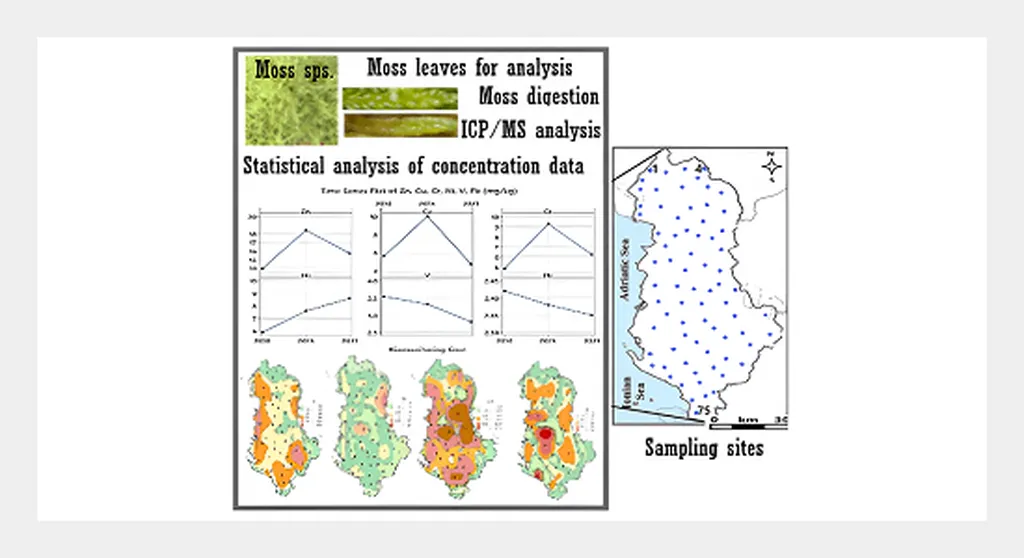In the heart of Albania, researchers at the Agricultural University of Tirana have been delving into the intricate world of aerosol optical properties, and their findings could have significant implications for the energy sector. Led by Genti Malollari from the Department of Physics and Applied Sciences, the team has been exploring how assumptions about the Ångström exponent can impact the accuracy of aerosol profiles derived from lidar observations. Their work, recently published in the journal ‘Atmospheric Measurement Techniques’ (translated as ‘Metodologjitë e Mësimit të Atmosferës’), sheds light on the uncertainties introduced by this assumption and offers an alternative approach to improve the precision of these measurements.
Aerosols, tiny particles suspended in the atmosphere, play a crucial role in cloud formation and the Earth’s radiation budget. Understanding their properties is essential for accurate climate modeling and air quality assessments. Lidars, or light detection and ranging systems, are powerful tools for measuring aerosol properties, providing vertical profiles of particle backscatter and extinction coefficients, as well as the extinction-to-backscatter ratio, known as the lidar ratio.
However, the traditional method of computing these profiles from nitrogen vibrational–rotational Raman signals requires an assumption about the Ångström exponent, a parameter that describes how aerosol optical properties vary with wavelength. This assumption can introduce uncertainties into the measurements. “The use of an Ångström exponent that deviates by just 1 from the true value can lead to relative uncertainties of 5% to 10% in the vibrational–rotational Raman lidar solutions,” explains Malollari.
To address this issue, the team compared the traditional vibrational–rotational Raman lidar approach with an alternative method that uses pure rotational Raman signals. This alternative approach does not require an Ångström exponent assumption, potentially offering more accurate measurements. The researchers presented four case studies based on observations of wildfire smoke, Saharan dust, residential wood combustion smoke, and a cirrus layer, deriving optical properties at a wavelength of 532 nm.
The findings highlight the importance of accurate Ångström exponent assumptions in vibrational–rotational Raman lidar measurements. By understanding and mitigating these uncertainties, researchers can improve the reliability of aerosol profiles, which are vital for climate models and air quality assessments. For the energy sector, this research could lead to more accurate predictions of solar energy potential, as aerosols can significantly impact solar radiation reaching the Earth’s surface.
As the world grapples with the challenges of climate change and air pollution, the need for precise and reliable atmospheric measurements has never been greater. This research not only advances our understanding of aerosol optical properties but also paves the way for more accurate climate models and air quality assessments. In the words of Malollari, “Our findings underscore the importance of careful consideration of the Ångström exponent in lidar measurements, which can significantly enhance the accuracy of aerosol profiles.”
The implications of this research extend beyond academia, offering valuable insights for industries reliant on atmospheric data, particularly the energy sector. As renewable energy sources like solar power continue to grow, the ability to predict and measure atmospheric conditions with precision becomes increasingly important. By improving the accuracy of aerosol profiles, this research could contribute to more efficient and effective solar energy systems, ultimately benefiting both the environment and the economy.
In the broader context, this study highlights the ongoing efforts to refine and improve atmospheric measurement techniques. As technology advances, so too does our ability to understand and interact with the world around us. The work of Malollari and his team is a testament to the power of scientific inquiry and its potential to drive meaningful change. As we look to the future, the insights gained from this research will undoubtedly play a crucial role in shaping our understanding of the atmosphere and its impact on our planet.

